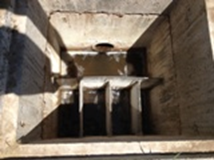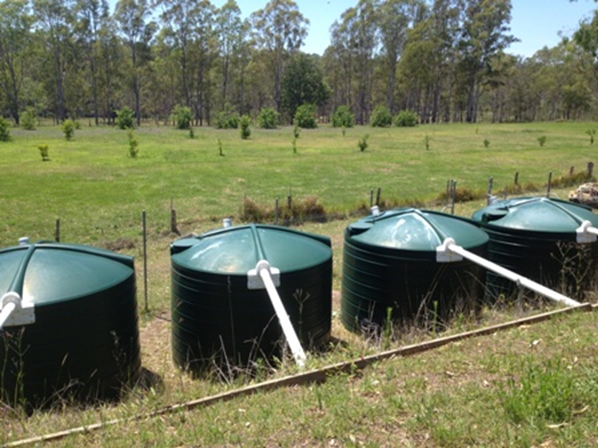Jubullum Village Sewage Management System: Part 2
Ecoteam manages the water resources at Jubullum Village, including the Drinking Water and Sewage Wastewater. This blog explains what happens to the Sewerage Wastewater generated from the village and the Sewage Management processes involved. Part 1 of the blog (published here) explains the primary treatment process for the sewage (from household to removal of solids). Part 2 of the blog (this blog) – explains the secondary treatment process (treatment in constructed wetlands and irrigation onto an orchard).
Sewage water is often referred to as ‘Wastewater’. At Ecoteam we like to refer to it as Resource Water because once it is treated it can then be reused for irrigation. Reusing treated sewage water for irrigation helps to ease pressure on our finite Drinking Water Resources.
Derek Torrens, a well-respected indigenous community member, is part of Ecoteam and manages the operation and maintenance of the water resources for the village.
Jubullum Village consists of approx. 50 homes with a population of about 200 residents and is situated west of the township of Tabulam in Northern NSW at 28°53’38.71’’S 152°31’42.37’’E.
The Treatment Train (continued!)
Constructed Wetlands
The constructed treatment wetlands are comprised of two paired cells in parallel that include an open water component and gravel filled sub-surface horizontal flow component. Effluent is discharged from the manifold via 40mm adjustable inlet risers.
The wetlands are planted out with four wetland reed species, Frogs Mouth spp. Philidrum lanuginosum, Jointed Twig Rush spp. Baumeaarticulata, River Club Rush spp. Schoenoplectusvalidus, and Sea Rush spp. Juncuskraussi.
In nature, wetlands are the kidneys of the earth removing pollutants from the water cycle and transpiring much of the water back into the atmosphere. The wetland plants help to treat the resource water. Colonies of micro-organisms known as biofilm grow around the roots of the plants and remove pollutant nutrients such as nitrogen and phosphorous as well as pathogen containing bacteria such as E.coli.
Chlorine disinfection system
Once the wetland plants have treated the resource water to a secondary level, the water flows through a Chlorine disinfection system. This simple system kills any pathogen containing bacteria that may have made it through the wetlands.
Dosing tanks and siphons
The flow is then split into 4 dosing tanks; within each dosing tank is a dosing siphon.
A dosing siphon is like a pump but it has no moving parts and requires no energy input to operate. This passive device utilises natural hydrostatic air pressure to allow one large burst (dose) of water to leave the tank and distribute itself evenly throughout its effluent reuse area. This promotes the efficiency and longevity of the system.
Sub surface irrigation system
The water from the dosing tanks is irrigated through sub-surface irrigation onto the roots of citrus trees in the fruit orchard. Each dosing tank has its own part of the subsurface irrigation field that it irrigates.
The fruit from the orchard is harvested when it is ripe and distributed to community members. The Jubullum Sewage Management system is a prime example of how to turn waste into resources.
By treating water using wetland based treatment systems, you provide a low cost, high performance, low maintenance and environmentally sustainable solution to managing waste and creating a resource.
By using gravity you can employ less pumps, and by using non mechanical treatment methods (wetlands) you reduce your power input, which lowers your energy consumption, which saves money, and lowers your carbon footprint – which equals sustainability.
Aaron Taylor, Operations Manager, Ecoteam.
For more information please contact Aaron Taylor our Senior Operations Manager (Water and Sewerage) here at Ecoteam. You can call the office on (02) 6621 5123 or email info@ecoteam.com.au if you have any questions for Aaron.
If you need help or advice on managing your On Site Sewage System, Ecoteam can help. We provide design and construction services, as well as condition assessments, system operation and maintenance for all sewage treatment systems – great and small.
And remember – your sewage is a resource!
Our next blog will is about Biochar and it’s role in Environmental Management.






